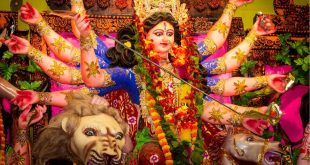 Chaitra and Shardiya Navratri Importance: Exploring the Essence of Hindu Festivals
Chaitra and Shardiya Navratri Importance: Exploring the Essence of Hindu Festivals
Chaitra and Shardiya Navratri hold immense significance in Hindu culture, marking not just one, but four auspicious occasions throughout the year. According to the Hindu calendar, the commencement of the new year initiates with Chaitra Navratri, celebrated in the first month of the year. Following this, the second Navratri, known as Ashadha Navratri, occurs during the Ashadha month. Subsequently, the third Navratri, the widely celebrated Shardiya Navratri, takes place in the Ashwin month. Lastly, the year concludes with Magha Navratri, observed during the Magha month.
Chaitra Navratri: The Spring Festival
Chaitra Navratri, occurring in the month of Chaitra, marks the onset of spring, symbolizing rejuvenation and new beginnings. Lasting for nine days, this festival involves elaborate rituals and fervent worship of the nine forms of Goddess Durga. The ninth day, known as Ram Navami, holds special significance as it commemorates the birth of Lord Rama, signifying the victory of righteousness over evil.
Shardiya Navratri: The Autumn Festival
Shardiya Navratri, celebrated in the month of Ashwin, signifies the onset of autumn and is observed with great zeal and devotion. Similar to Chaitra Navratri, devotees worship Goddess Durga in her various forms during these nine days. The festival culminates on the tenth day, known as Vijayadashami or Dussehra, symbolizing the triumph of good over evil. It is believed that on this day, Lord Rama defeated the demon king Ravana, reinstating righteousness and order in the world.
Key Differences between Chaitra and Shardiya Navratri
While both Chaitra and Shardiya Navratri span over nine days and involve worship of Goddess Durga, they differ significantly in their timing and seasonal context. Chaitra Navratri marks the arrival of spring, while Shardiya Navratri heralds the advent of autumn. Additionally, the mythological events associated with these festivals, such as the birth of Lord Rama and the victory of Goddess Durga over Mahishasura, distinguish their cultural significance.
Similarities in Worship and Devotion
Despite their seasonal disparities, Chaitra and Shardiya Navratri share common themes of reverence and devotion towards Goddess Durga. The nine-day period is characterized by elaborate rituals, fasting, and spiritual practices aimed at seeking the blessings of the divine feminine. Devotees engage in various religious observances, including recitation of sacred hymns, meditation, and charity, to invoke the blessings of Goddess Durga and attain spiritual fulfillment.
Cultural Importance of Navratri Celebrations
Navratri celebrations transcend religious boundaries and play a vital role in promoting cultural unity and harmony. These festivals serve as a platform for communities to come together, irrespective of caste, creed, or social status, and partake in collective worship and festivities. The vibrant cultural tapestry of Navratri encompasses music, dance, and traditional arts, fostering a sense of inclusivity and camaraderie among people.
Impact on Society and Communities
The observance of Navratri has far-reaching implications on society, ranging from fostering social cohesion to stimulating economic activity. The festive season sees a surge in commercial markets, with businesses capitalizing on the heightened consumer demand for traditional attire, ornaments, and festive delicacies. Moreover, Navratri fosters social solidarity by encouraging communal participation in religious rituals and cultural events, thereby reinforcing the fabric of society.
Spiritual Significance and Personal Reflection
Navratri provides a spiritual sanctuary for individuals to introspect, purify their souls, and strengthen their faith. The practice of fasting and abstaining from worldly pleasures during this period facilitates inner cleansing and renewal. It offers devotees an opportunity to connect with their inner selves, seek divine guidance, and reaffirm their commitment to righteous living.
Global Observance and Cultural Integration
While Navratri holds profound significance in Indian culture, its celebration has transcended geographical boundaries and gained international recognition. In countries with significant Hindu diasporas, such as the United States, the United Kingdom, and Canada, Navratri festivities are observed with great fervor, showcasing the cultural diversity and richness of Hindu traditions. The assimilation of Navratri into global cultural landscapes underscores its universal appeal and relevance.
Modern Relevance and Contemporary Practices
In contemporary times, Navratri celebrations have evolved to encompass modern elements while retaining their traditional essence. The fusion of traditional rituals with contemporary music and dance forms has revitalized the festival, attracting
 Suspense Crime Sach Ka Dam
Suspense Crime Sach Ka Dam


